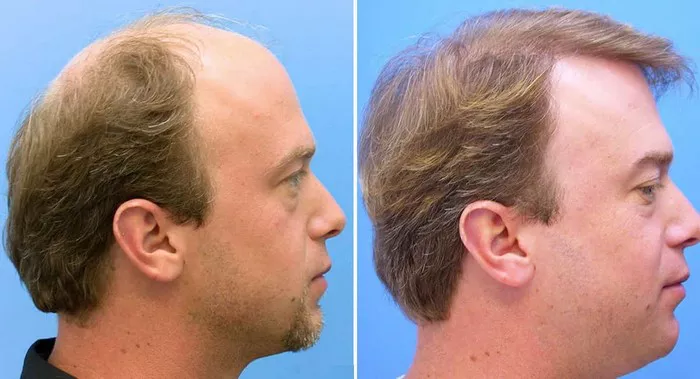Hair transplantation has become a popular solution for those seeking to restore a fuller head of hair. However, a common question that arises in the minds of individuals considering this procedure is, “How many hair follicles are needed for a successful hair transplant?” In this comprehensive guide, we will explore the factors that influence the quantity of hair follicles required, ensuring that you have a clear understanding of what to expect during your hair restoration journey.
Why the number of hair transplants matters?
The number of hair transplants matters because it directly impacts the final outcome and patient satisfaction. Hair transplant procedures have limitations, including the availability of donor hair and the size of the balding area. If too few grafts are transplanted, the coverage may be insufficient, leaving an unnatural appearance. On the other hand, excessive transplants can deplete the donor area, making future procedures challenging. The surgeon must carefully plan the number of transplants to achieve a balanced, aesthetically pleasing result while preserving donor hair for potential future procedures. Proper evaluation and communication between the patient and surgeon are crucial to determine the right number of grafts needed.
Assessing the Extent of Hair Loss
Here’s how to assess the extent of hair loss:
1. Norwood Scale:
Hair transplant specialists often refer to the Norwood Scale to classify male pattern baldness. This scale helps determine the extent of hair loss, which, in turn, influences the number of follicles needed.
2. Ludwig Scale:
For female pattern baldness, the Ludwig Scale is commonly used to evaluate hair loss severity. Identifying where you fall on this scale assists in estimating the required follicle count.
Understanding Hair Follicle Density
Hair follicle density refers to the number of hair follicles present in a specific area of the scalp. It can vary greatly among individuals and ethnic groups. Follicle density is a key factor in determining hair thickness and overall coverage. Higher density often results in thicker, fuller-looking hair, while lower density can lead to a more sparse appearance. Hair transplant procedures take follicle density into account, with surgeons strategically transplanting follicles from denser donor areas to areas with thinner hair. Additionally, maintaining good scalp health through proper care and nutrition can help support and maximize existing follicle density.
Achieving Natural-Looking Results
Here’s how to get natural-looking results:
1. Frontal Hairline:
The frontal hairline plays a crucial role in framing the face. A natural-looking frontal hairline often requires careful attention to detail and the precise placement of individual follicles.
2. Crown Area:
The crown area typically requires a higher follicle count due to the larger surface area and the need for dense coverage.
3. Transition Zones:
Transition zones, where the transplanted hair meets existing hair, require meticulous planning to ensure a seamless blend and avoid a noticeable demarcation.
Consultation with a Hair Transplant Specialist
Here’s how to help you consult a hair transplant specialist:
1. Importance of Consultation:
A consultation with a qualified hair transplant specialist is a crucial step in determining the precise number of follicles needed. During this consultation, your specialist will assess your unique situation and provide personalized recommendations.
2. Medical Assessment:
In addition to assessing your hair loss pattern, a medical evaluation will be conducted to ensure you are a suitable candidate for the procedure. Factors such as your overall health and the quality of your donor area will be considered.
3. Creating a Customized Plan:
Based on the evaluation, your specialist will create a customized treatment plan, which includes the estimated number of follicles required, the transplant technique to be used, and the expected results.
Achieving a Successful Hair Transplant
In the world of hair transplantation, there is no one-size-fits-all answer to the question of how many hair follicles are needed for a successful transplant. It is a highly personalized process that depends on various factors unique to each individual. To ensure the best possible outcome, consult with a qualified hair transplant specialist who can provide expert guidance based on your specific needs and goals.
In conclusion, understanding the ideal number of hair follicles needed for a successful hair transplant is a complex process that requires careful consideration of individual factors. By working closely with a knowledgeable specialist and having realistic expectations, you can embark on your hair restoration journey with confidence, knowing that you are taking the right steps to achieve natural and satisfying results.


